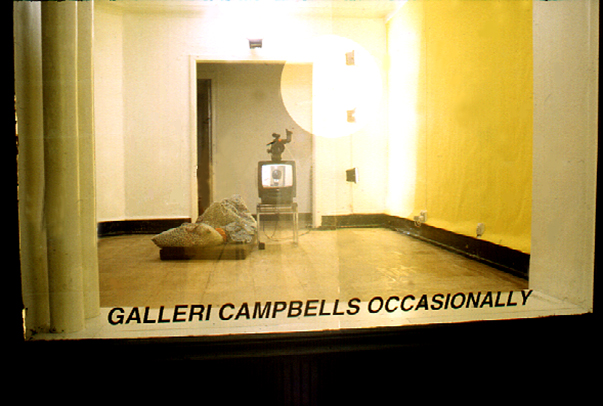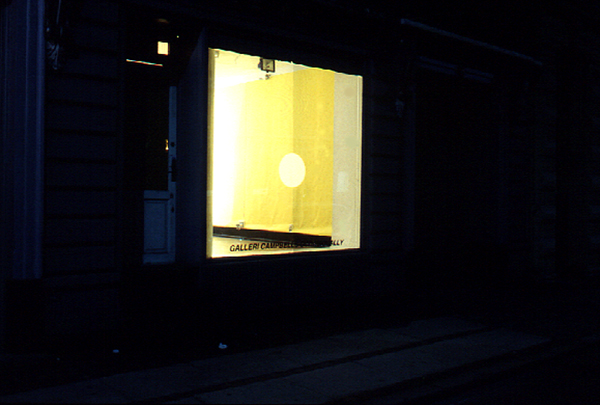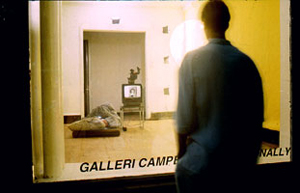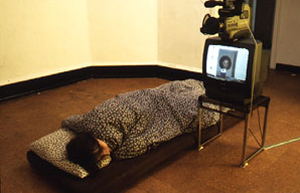| Katya Sander | e@katyasander.net |
| Evening Piece 1996 camera, monitor, mattress and mirror-film Evening Piece, Gallery Campbells Occasionally, Copenhagen, 1996  A large window in the gallery facing the street (originally a store window) was made into one-way glass using a mirror-film. In the center of the window, a circular hole was cut in the film leaving the normal window-glass untouched. As is well known from office buildings, one-way glass reflects light on the brightest side, leaving the other side transparent. If the strength of the light changes from one side to the other, the mirror-effect is reversed. The gallery was also equipped with a video camera. In the middle of the gallery, pointed directly at the window, the camera ‘looked’ at the street, from atop a monitor playing back its image. Seen from the street during the day, bright sunlight caused the window to act as a mirror. Only the small hole in the center was transparent. Looking through this hole, the spectator’s gaze was met by the camera’s. Beneath that the video monitor displayed the view from the inside through the transparent window. The spectator – who thought she was peeping discretely through a little opening – could see her whole body on the monitor caught in the rather indiscreet act of staring at, or even spying on, a private interior. As daylight decreased and lights were turned on inside the gallery the effect traded sides. Now the window mirrored the room’s interior and became transparent from outside. Glancing through the window into the brightly lit room, the pedestrian was met directly by the camera and monitor staring back. Naturally expecting to see an image of herself standing in the street on the video monitor the viewer was surprised to discover a reversed image of the gallery with her own disproportionately large head and face isolated in a circle, floating in the middle.
After midnight I would lock the door, place a mattress on the floor between the window and the camera/monitor and sleep in the lighted gallery. The situation suggested that the camera, with its open recording eye, would guard and protect me from anonymous gazes – ‘look back’ on my behalf – while my own eyes where shut and I was elsewhere, vulnerable in my sleep. But of course the camera could not ‘see’ anything except the mirrored room with me sleeping in it, along with occasional glimpses of curious pedestrians appearing in the dark hole at its the center. Inevitably these late-night passersby tried to figure out the dynamics of the set up in the gallery. Studying the image on the monitor they would discover that the one-way glass made the camera nearly blind to the outside world. But in discovering the one spot where they could see themselves displayed on the monitor they also revealed themselves looking in at me.
|


